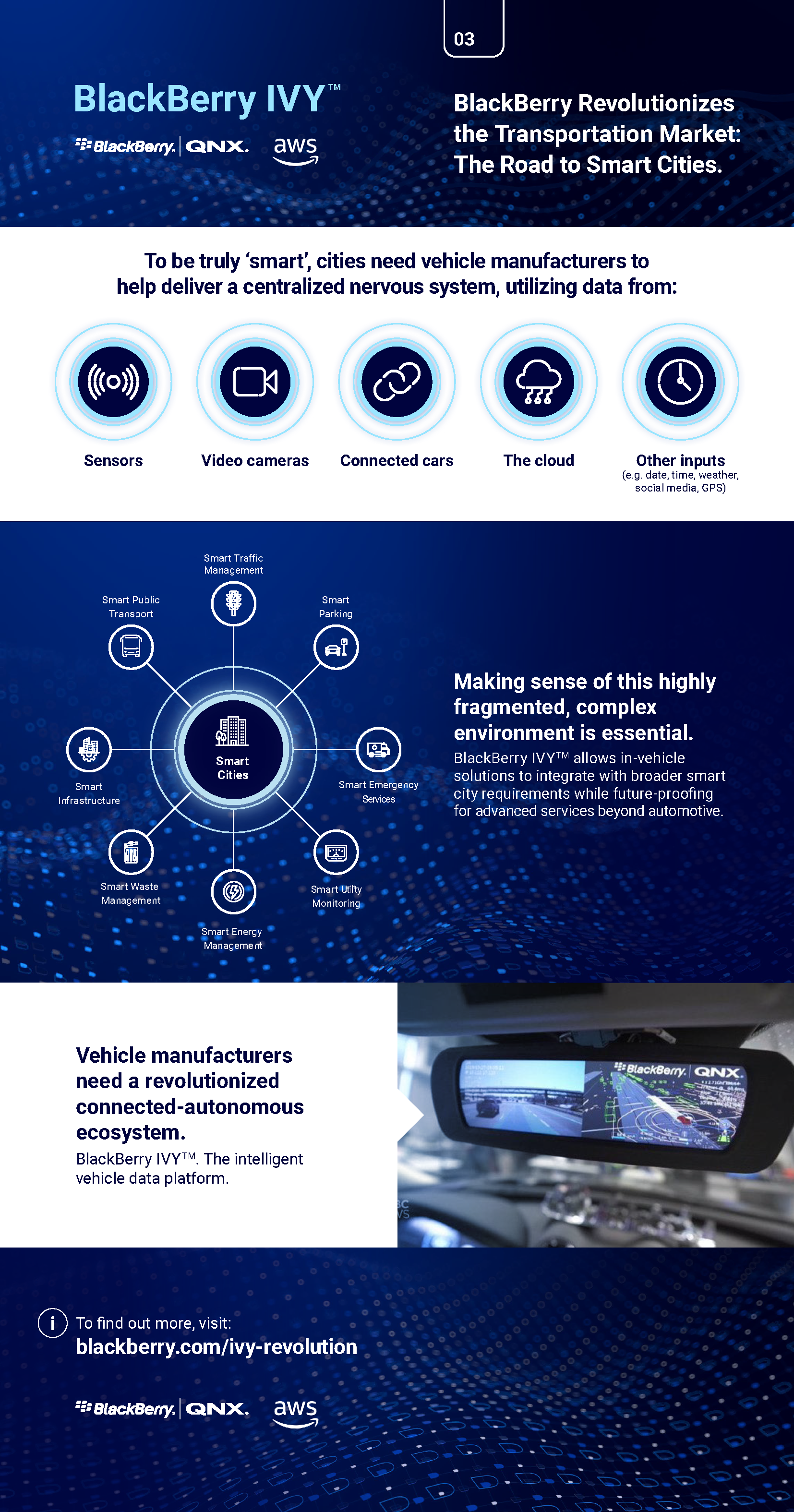Software-Defined Vehicles and Their Role in Smart Cities
For over a century, most of the world has operated on a concept of transportation that focuses heavily on personal vehicles, particularly the car. From its first rolling off the assembly line, the automobile appealed to our sense of freedom and individual empowerment. And while that trend might be changing as new generations come along that are less interested in vehicle ownership, it’s unlikely to go away entirely. Nevertheless, as the cities we live in get “smarter,” how cars fit into that ecosystem will change significantly, and a key enabling technology in that transformation will be the software-defined vehicle (SDV).
What Makes a City “Smart”?
A “smart city” is one that’s capable of harnessing the power of today’s most innovative technologies. These cities are defined as urban areas that utilize information and communication technologies (ICT) to improve government services and make them more efficient. Smart cities can also improve the flow and function of how you navigate through the urban environment. One example is a centralized traffic management system that changes stoplights based on demand (instead of random timing) to reduce congestion. Drivers and businesses save time, save money, and vehicle emissions from idling at stoplights is reduced.
SDVs Are Crucial to the Future of Urban Living
Most of the attention paid to the current transformation of vehicular transportation has been focused on electrification. But advanced electric vehicles (EVs) come equipped with connectivity features, and quite often, were built with a mind to increase integration of the disparate systems found in a conventional, combustion-powered car.
For much of the history of the automotive industry, carmakers have only made some of their components themselves, with many coming from specialist third parties, such as those that today provide high-performance brakes, premium entertainment systems, satellite navigation and other key subsystems. Now, however, new designs have made the way these components work together increasingly important, requiring a switch toward software that can provide the “glue” between them.
This is how the SDV was born. With so many car systems gaining computerization and software controls, centralizing this stack around a common codebase has provided many benefits. For instance, having a satellite navigation system that communicates with an EV’s battery can enable the navigation screen to display remaining capacity after a journey. Another benefit is a temperature-preconditioned battery. This means that if the driver sets a destination known to have a charging station, the EV can make adjustments so that upon arrival, the battery’s temperature is optimized to get a maximum charge.
As the smart city moves from concept to reality, the SDV will become even more important as a dynamic node in this system. In the smart city, data and information technology are leveraged to improve operational efficiency, share services with public citizens, and provide a better quality of government. This includes helping traffic flow more smoothly, imposing environmental regulations, managing parking more effectively, and reducing energy usage where possible.
The SDV can become fully integrated into this ecosystem, because it connects its own local “edge” computing systems to the central cloud. Technologies such as 4G, 5G and their successors are enabling the SDV to share the data it is collecting with smart infrastructure, and in turn receive data back. For example, the SDV can send its average speed and location — even weather or road conditions it is encountering — back to the cloud, to enhance traffic data, which other vehicles can then use to optimize their routes. Tolls can be charged automatically based on vehicle location, without the need for physical barriers or license plate recognition. In the future, data from the vehicle’s cameras and other sensors could be used to enhance weather reporting, or to provide additional information for ensuring physical security. The car itself can even be integrated more directly into the energy flow of the urban environment.
We are already seeing some of this being implemented. Energy providers have been offering low night-time rates for some time, to incentivize EV owners to charge their electric cars when the grid is less utilized. But this fixed period, which drivers take advantage of via scheduled charging, can be provided on a more dynamic basis with an SDV. Although the night is usually the time of lowest demand, there could be other times of low utilization, and services are emerging that can control your car to charge cheaply whenever there is free capacity, making more efficient use of the grid.
Beyond this, experiments in “vehicle-to-grid” technology have proven successful. This is where a car battery can also be tapped to send excess power from the vehicle back to the local utility grid, for use by homes and businesses. For these kinds of services, there needs to be full communication between the car, its battery and the grid, all occurring in real time.
SDVs, Autonomous Driving, and Micromobility
Pushing out further in the future, as autonomous driving becomes a reality, the dynamic connection between cars and their urban environments will become even more fluid. An acronym often applied to characterize SDVs is CASE, which stands for Connected, Autonomous, Shared and Electric. The “A” in CASE will become increasingly important moving forward as cars become part of a city’s transportation fabric. While public transportation and “micromobility” options (such as e-bikes and e-scooters), will continue to proliferate in the cities of the future, neither of these current transportation modes can support every journey. Autonomous vehicle features that mesh with their surroundings will eventually fill the gaps, enabling your car to drop you off, park itself for you, and then pick you up later, all based on smart-city-provided data services that tell the car where free parking spaces are, and the most efficient route to reach them.
BlackBerry’s Role as an Enabler
As automakers contemplate a rapidly changing future with SDVs at its center, software expertise is becoming essential. Fortunately, there are SDV platforms emerging that can do much of the heavy lifting, such as by providing a common interface between cloud-based connectivity and local car sensors and systems. One platform at the forefront is BlackBerry IVY™. In fact, Frost & Sullivan recently awarded BlackBerry IVY the 2022 North America Enabling Technology Leadership Award, thanks to the platform’s complete edge-to-cloud capabilities. BlackBerry’s expertise in Internet of Things, cybersecurity, mobile communications, and automotive software provides best-in-breed abilities at every level of SDV development. Over 215 million vehicles currently on the road worldwide already rely on BlackBerry® QNX® real-time embedded software, providing a solid basis of proven and trusted technology for automakers to build upon.
While urban mobility is changing, cars will remain one of the key transportation options. Many of us are already discovering that it can be more relaxing to let the car do most of the work on a jammed-up highway, and we could soon be enjoying self-driving taxis providing urban point-to-point transit. But personal vehicles for individuals and small groups will still have a place in our lives — even in the smart cities of the future. For that place to fit seamlessly with the smart city vision, however, automakers will need to fully embrace the potential of SDVs, and those that adapt quickly will gain a competitive advantage in the marketplace.
To learn more about the myriad organizations working together to deliver innovations in the cars of the very near future, check out our Get In: The BlackBerry Software-Defined Vehicle Podcast Series.
BlackBerry IVY can help your organization improve and accelerate development of connected and autonomous vehicles. Check out the infographic (below) and learn more by reading the 2021 Frost & Sullivan report that named BlackBerry IVY an industry leading edge-to-cloud software platform for automakers and smart cities.



